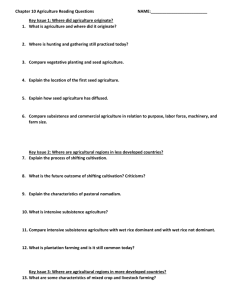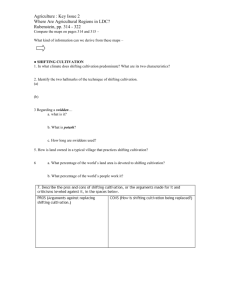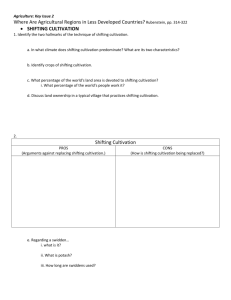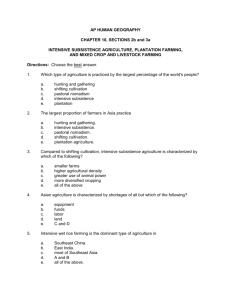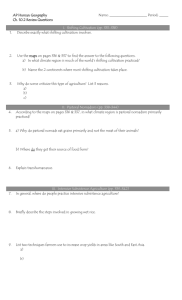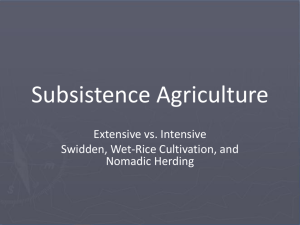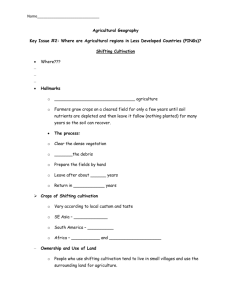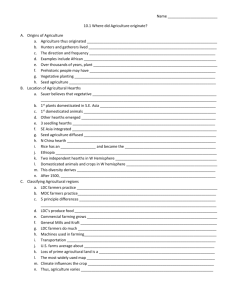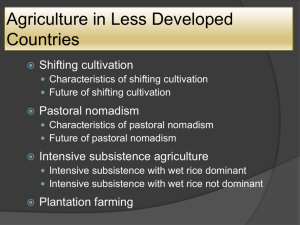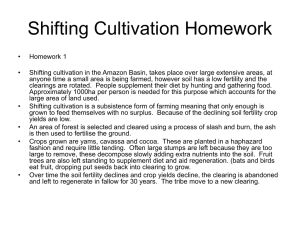Agricultural Regions in LDCs: Shifting Cultivation & More
advertisement
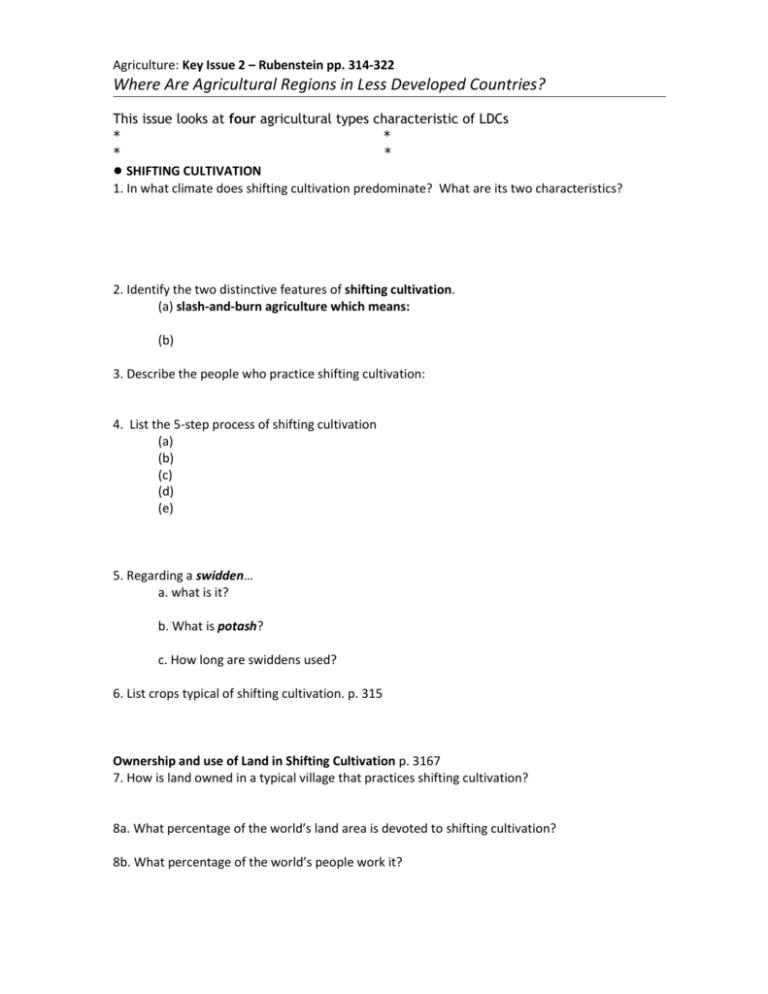
Agriculture: Key Issue 2 – Rubenstein pp. 314-322 Where Are Agricultural Regions in Less Developed Countries? This issue looks at four agricultural types characteristic of LDCs * * * * ● SHIFTING CULTIVATION 1. In what climate does shifting cultivation predominate? What are its two characteristics? 2. Identify the two distinctive features of shifting cultivation. (a) slash-and-burn agriculture which means: (b) 3. Describe the people who practice shifting cultivation: 4. List the 5-step process of shifting cultivation (a) (b) (c) (d) (e) 5. Regarding a swidden… a. what is it? b. What is potash? c. How long are swiddens used? 6. List crops typical of shifting cultivation. p. 315 Ownership and use of Land in Shifting Cultivation p. 3167 7. How is land owned in a typical village that practices shifting cultivation? 8a. What percentage of the world’s land area is devoted to shifting cultivation? 8b. What percentage of the world’s people work it? 9. Identify THREE economic activities that are replacing shifting cultivation. FUTURE of. . . p. 317 * * * 10. Describe the pros and cons of shifting cultivation, or the arguments made for it and criticisms leveled against it, in the spaces below. PROS (Arguments against replacing shifting cultivation.) 1. CONS (How is shifting cultivation being replaced?) 2. 2. 3. 3. 4. 4. 5. 5. 1. ● PASTORAL NOMADISM p. 318 11. What is pastoral nomadism? 12. In what type of climate is it usually found? 13. What regions of the earth are currently occupied by this practice? 14. How do pastoral nomads obtain grain (several ways)? 15. What animals are chosen, and where? 16. Describe the movements of pastoral nomads. a. b. c. d. e. 17. What is transhumance? 18. What is pasture? 19. In what ways is pastoral nomadism currently threatened by modern governments? a. b. c. d. ● INTENSIVE SUBSISTENCE FARMING p. 319 20. What is meant by “intensive”? 21. Where is intensive subsistence agriculture practiced? Why there? Intensive Subsistence with Wet Rice Dominant p. 319 22a. What is “wet rice”? 22b. What is a “sawah”? 22c. “paddy”? 22d. “chaff”? 22e. “threshed”? 22f. “winnowed”? 22g. “hull” 23. Wet rice requires a flat field – but some farmers must cultivate it in hilly or mountainous regions. How do they accomplish this? 24. What is double-cropping? 25. Where is double-cropping possible? Not possible? Intensive Subsistence with Wet Rice Not Dominant p. 321 26. In areas of intensive subsistence agriculture where wet rice is not dominant, what is the major crop? 27. How are multiple harvests made possible in these less mild regions? Explain crop rotation: 28. Using the map on pp. 340-41, identify regions outside of Asia where “wet-rice not dominant” intensive subsistence agriculture is practiced. 29. Make some notes about intensive subsistence farming in communist China. p. 321 1. Agriculture in Communist China (since 1949 Revolution) Agriculture following the communist Agriculture in Communist China today, revolution, communes. post-commune. 1. 2. 2. 3. 3. 4. 4. PLANTATION FARMING p. 321 30. Define/describe plantation farming by filling in the table below. PLANTATION Climate Continents Situated in Owned an operated by Types of crops Definition Workers

